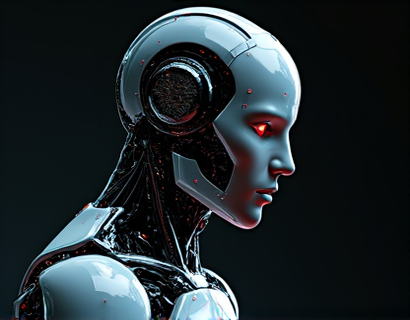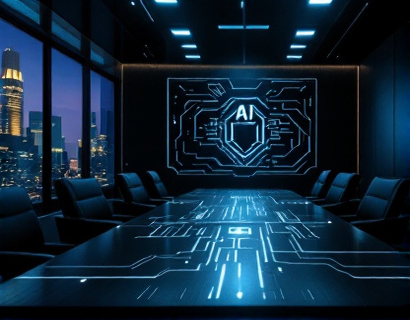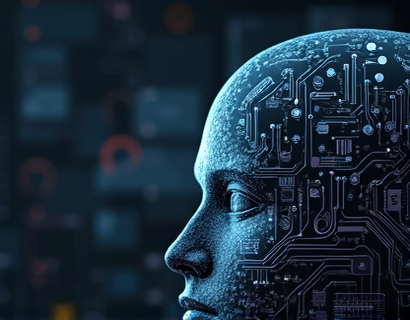Transforming Tech Education with AI-Driven Insights: An Intuitive Chat Interface for Specialized Knowledge and Child-Friendly Learning
The integration of Artificial Intelligence in education has opened new avenues for accessing specialized tech knowledge, making it more intuitive, verified, and accessible to a broader audience, including children and students. This article delves into how an AI-driven chat interface is revolutionizing tech education by providing users with expert insights on the latest industry trends and services, all while ensuring safety and educational value for its young users.
Understanding the Need for AI in Tech Education
The rapid evolution of technology has made it challenging for educators, parents, and learners to keep pace with the latest developments. Traditional methods of learning often fall short in delivering real-time, accurate, and specialized information. This is where AI-driven chat interfaces come into play, offering a dynamic solution that adapts to the user's needs, providing up-to-date insights and expert knowledge in a conversational format.
Key Features of AI-Driven Chat Interfaces in Education
These platforms are designed with several key features to ensure they serve as effective tools for tech education:
- Content Verification: Ensuring all information provided is accurate and up-to-date, sourced from credible databases and expert contributions.
- Adaptive Learning: Tailoring the complexity and depth of information based on the user's level of expertise and learning pace.
- Child-Friendly Interface: Offering a version of the chat that is safe, engaging, and educational for children and students, with content appropriately adjusted for their age group.
- Interactive Learning: Encouraging active participation through questions, quizzes, and interactive discussions to enhance understanding and retention.
Specialized Tech Knowledge at Your Fingertips
One of the most significant advantages of an AI-driven chat interface in tech education is its ability to deliver specialized knowledge on demand. Whether it's the latest advancements in artificial intelligence, insights into cybersecurity trends, or detailed explanations of blockchain technology, users can engage in conversations that provide deep, expert-level insights.
These chats are not just about delivering information; they are designed to foster a deeper understanding of complex topics. By asking follow-up questions and providing additional resources, the AI assistant helps users explore subjects in greater depth, making it an invaluable tool for tech enthusiasts, students, and professionals alike.
Ensuring Safety and Educational Value for Young Learners
The integration of AI in education does not compromise on safety, especially for children and students. A critical feature of these platforms is the child-friendly version, which filters content to ensure it is appropriate and educational. This version adheres to strict guidelines to prevent exposure to inappropriate or complex information, focusing instead on age-appropriate concepts and learning objectives.
Moreover, the chat interface can be customized to match educational curricula, making it a supplementary tool for teachers and a safe learning environment for students. Parents can also have peace of mind knowing their children are interacting with a controlled and educational digital environment.
Enhancing Learning Through Conversational Interaction
The conversational nature of AI chat interfaces makes learning more engaging and accessible. Users can ask questions in natural language, and the AI responds in a way that simulates a discussion with a knowledgeable mentor. This approach not only makes learning more enjoyable but also helps in retaining information better, as users are actively participating in the learning process.
For example, a student curious about the workings of a quantum computer can engage in a conversation that starts with basic principles and gradually delves into more complex concepts, based on their responses and level of understanding. This adaptive learning path ensures that each user receives an education tailored to their needs and pace.
Community and Collaboration
AI-driven chat interfaces in education also promote a sense of community and collaboration. Users can join discussions, ask questions, and share insights with peers and experts from around the world. This global exchange of knowledge breaks down barriers and fosters a collaborative learning environment that transcends geographical boundaries.
For educators and professionals, these platforms offer opportunities to connect with like-minded individuals, share research, and stay updated on industry trends. For students and young learners, it provides a space to ask questions, receive guidance, and learn from a diverse group of mentors and peers.
Future Prospects and Challenges
The future of tech education through AI-driven chat interfaces is promising, with continuous advancements in AI technology likely to enhance these platforms further. However, there are challenges to address, such as ensuring the AI remains unbiased, continuously updating the content to reflect the fastest-moving field of technology, and maintaining user trust in the accuracy and safety of the information provided.
Continuous feedback from users, especially from the educational community, will be crucial in refining these platforms. By focusing on user experience, educational effectiveness, and safety, the potential of AI-driven chat interfaces in transforming tech education can be fully realized.
Conclusion
AI-driven chat interfaces represent a significant leap forward in tech education, offering a blend of specialized knowledge, safety, and engaging learning experiences for all ages. By providing verified insights and expert guidance in a conversational format, these platforms are set to revolutionize how we access and understand technology. As the field continues to evolve, the integration of AI in education promises to make learning more accessible, interactive, and effective for everyone.










































